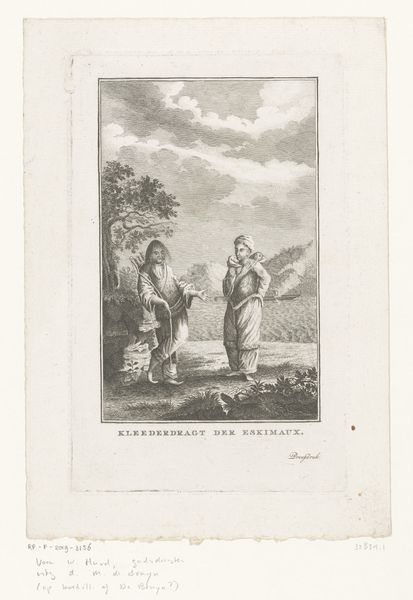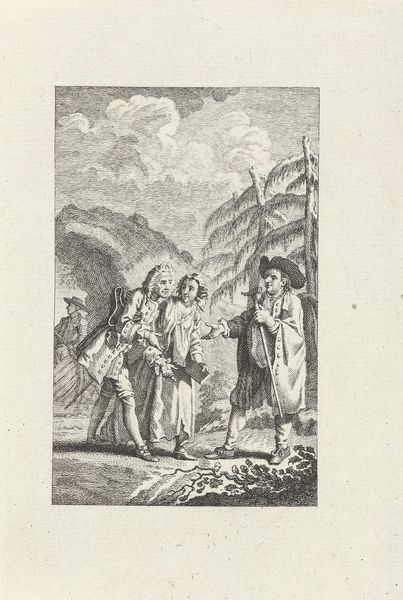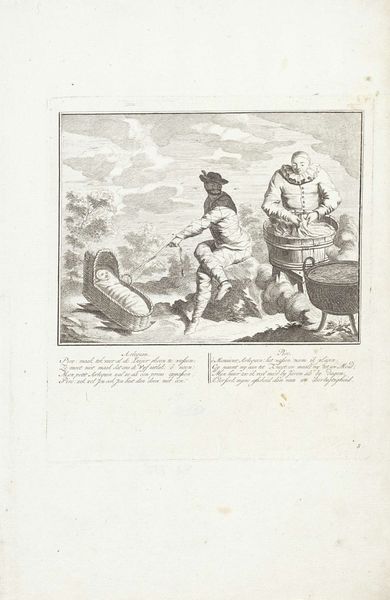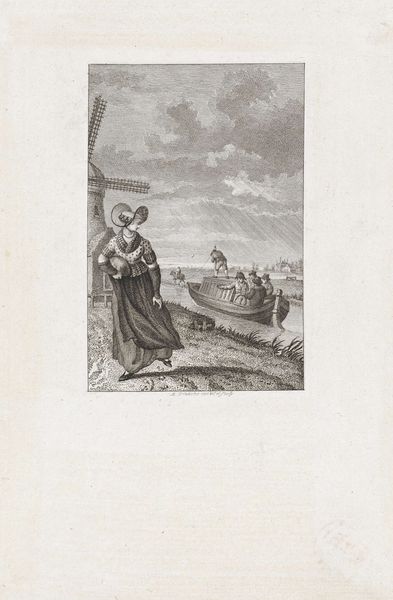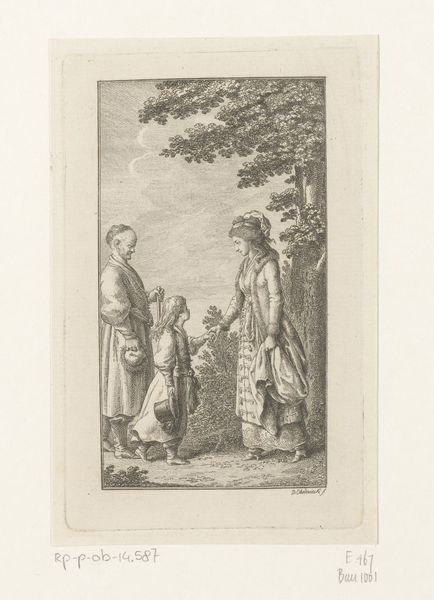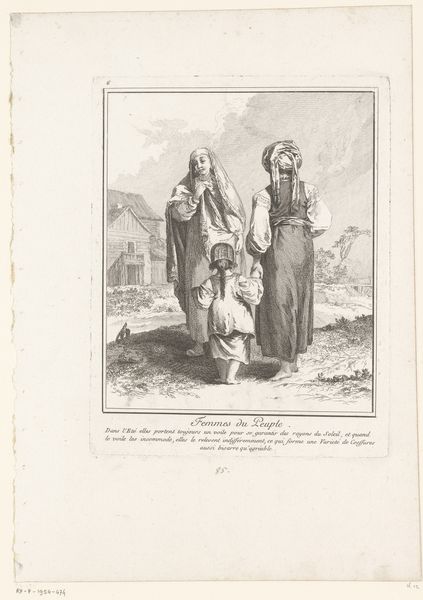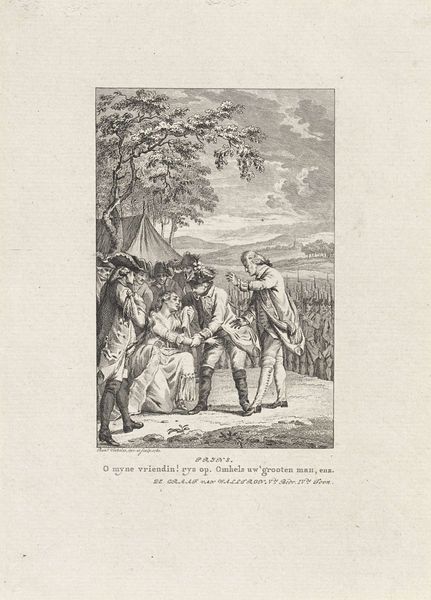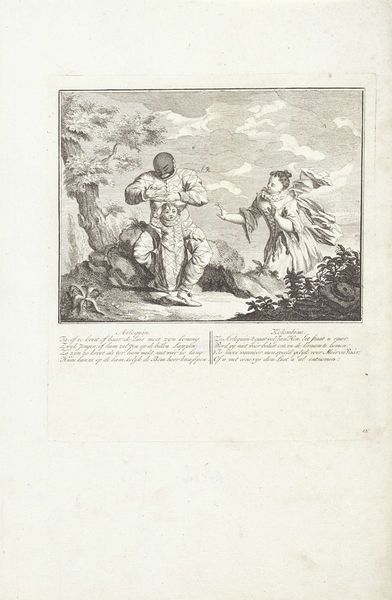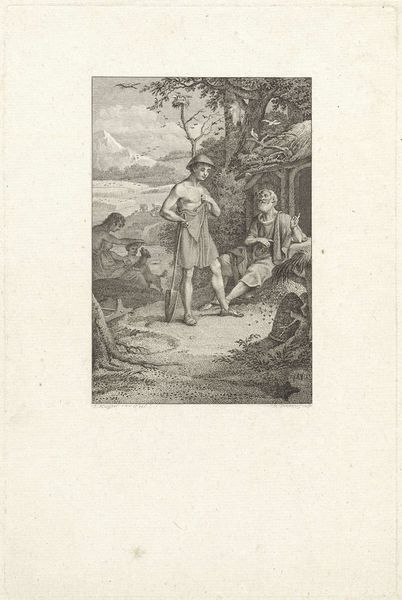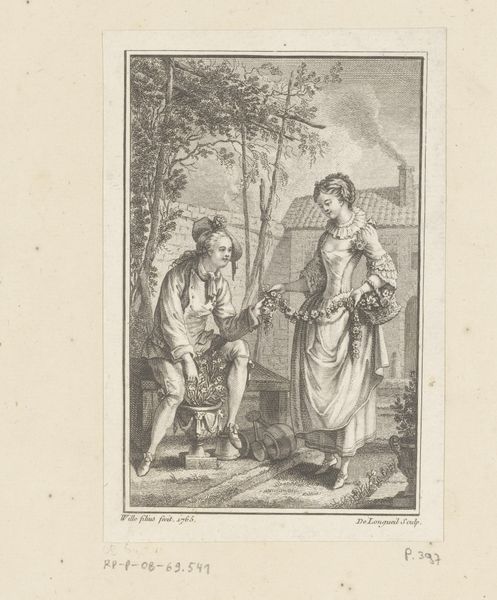
print, engraving
# print
#
engraving
Dimensions: height 228 mm, width 146 mm
Copyright: Rijks Museum: Open Domain
Curator: This engraving from 1822, simply titled "Inuit," offers a glimpse into a community of indigenous people in the Americas, rendered with striking realism. Editor: It feels…stark, almost uncomfortably so. The monochrome and somewhat severe expressions give it a very serious, almost anthropological feel, wouldn't you say? Curator: Absolutely. I see it as both an artifact of its time and a visual document raising complex questions about representation. The artist, Monogrammist JARB, leaves us wanting to know more about who commissioned the image. Editor: Knowing the historical context—the era of exploration and, let’s be blunt, colonial expansion—inevitably colours the experience. I'm curious about the figures and what we're not seeing. How were Indigenous people viewed through the lens of European and early American art? It makes me wonder what was being omitted, overlooked, or outright misrepresented in their depictions. Curator: Precisely. And what did “realism” mean in that context? Whose reality were they capturing? Yet, there's an undeniable humanity present. You can feel the wind, the chill... there's a certain respect in the portrayal, too. A starkness, maybe. An unflinching gaze. Editor: True. But consider the tradition of portraiture and the politics of displaying difference, too. Works like this walked a tightrope. Even depictions intending to faithfully render Indigenous communities had the power to define and confine how they were seen in a rapidly changing world. Curator: That tension, that contradiction, is what makes this unassuming little print so fascinating. It’s beautiful but with the weight of colonial history sitting heavily behind the scenes. The engraving medium itself, think about it: sharp lines defining something "new," a place to be categorized. Editor: Yes, it's impossible to view this artwork outside of these power dynamics and the harm done. Perhaps that is what we take from it in this moment—to interrogate not just what we see, but how, why, and through whose eyes. Curator: And to remember that, ultimately, art, even art intended as factual documentation, reflects its creator. Editor: Absolutely. A somber reminder, and a challenge to see beyond the surface, indeed.
Comments
No comments
Be the first to comment and join the conversation on the ultimate creative platform.
